Ve aqui e Inscribete a nuestro proximo TOEFL course
The differences between task 3 and task 4
The difference between Task 3 and Task 4 in the TOEFL Speaking section lies primarily in the source and type of material you are required to synthesize and summarize. Let’s break down each task to highlight these differences:
Task 3: Integrated Speaking Task (Campus Conversation)
- Content Source: Involves both a reading passage and a listening passage.
- Reading Passage: Typically, a short text introducing an academic concept or theory (about 100 words).
- Listening Passage: Usually a conversation between two people (often students) that relates to the academic concept introduced in the reading. This conversation applies the concept to a practical or relatable scenario, often including personal experiences or opinions.
- Task Objective: You are required to summarize both the reading and listening passages, explaining the academic concept and how it is discussed or exemplified in the conversation.
Task 4: Integrated Speaking Task (Academic Lecture)
- Content Source: Involves only a listening passage.
- Listening Passage: A lecture on an academic subject, which is usually more formal and detailed than the conversation in Task 3. The lecture tends to delve deeper into a topic, often including explanations of concepts, theories, and specific examples or research findings.
- Task Objective: You are required to summarize the lecture, focusing on the main ideas and key details presented. Unlike Task 3, there’s no need to connect information from two different sources (reading and listening).
Key Differences:
- Source Material: Task 3 integrates a reading and a listening passage, while Task 4 solely focuses on a listening passage (lecture).
- Nature of Listening Passage: Task 3 features a conversational style often with practical applications, while Task 4 is more academic and lecture-based.
- Summarization Focus: In Task 3, you synthesize information from two sources and explain how they relate. In Task 4, you summarize and extract key points from a single, more in-depth source.
Understanding these differences can help you prepare more effectively for each task, focusing on the specific skills and approaches required for each. If you have any more questions or need further clarification, feel free to ask!
Summary of Templates
Creating a structured note-taking template for each TOEFL Speaking task can be an effective strategy for organizing your thoughts and ensuring you capture all the necessary information. Here’s a suggestion on how you can divide your paper for notes according to the specific requirements of each task:
For TOEFL Speaking Task 1 (Independent Speaking Task)
Since this task is about expressing your opinion or experiences on a given topic, you can divide your paper into three sections:
- Introduction/Opinion: Note your main opinion or stance on the topic.
- Supporting Points: List two or three reasons or examples that support your opinion.
- Conclusion: Jot down a concluding statement that reiterates your opinion or provides a final thought.
Example Question:
Some people prefer to plan activities for their free time very carefully, while others choose not to make any plans at all for their free time. Compare the advantages of both approaches. Which approach do you prefer and why?
15 secs to prepare
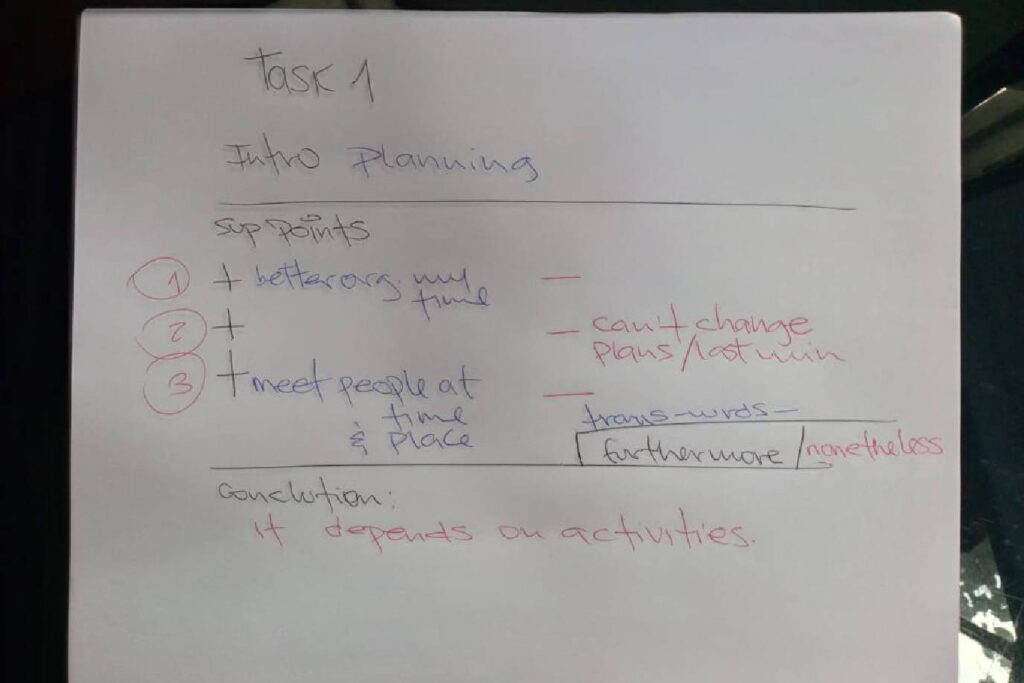
45 secs to answer
For TOEFL Speaking Task 2 (Integrated Speaking Task – Campus Situation)
This task involves both a reading and a listening passage. Divide your paper into two main sections:
- Reading Notes: Key points from the reading passage.
- Listening Notes: Main ideas and details from the listening passage that either support, contrast, or add to the reading passage.
Example Question
For TOEFL Speaking Task 3 (Integrated Speaking Task – Academic Topic)
This task also involves a reading and a listening passage but with a focus on academic content.
- Reading Notes: Note down the main academic concept or theory from the reading.
- Listening Notes: Jot down how this concept is explained, applied, or discussed in the listening passage, including examples or additional details.
For TOEFL Speaking Task 4 (Integrated Speaking Task – Academic Lecture)
Task 4 is solely based on a listening passage.
- Main Topic: Write down the main topic or theme of the lecture.
- Key Points: Divide the rest of the paper into sections for each main point or idea discussed in the lecture, along with examples or important details.
Example Question: Explain quantum computing as described in the lecture. Discuss how it differs from classical computing and the potential challenges it faces.
20 Secs to Prepare
Listen to the lecture and take notes:
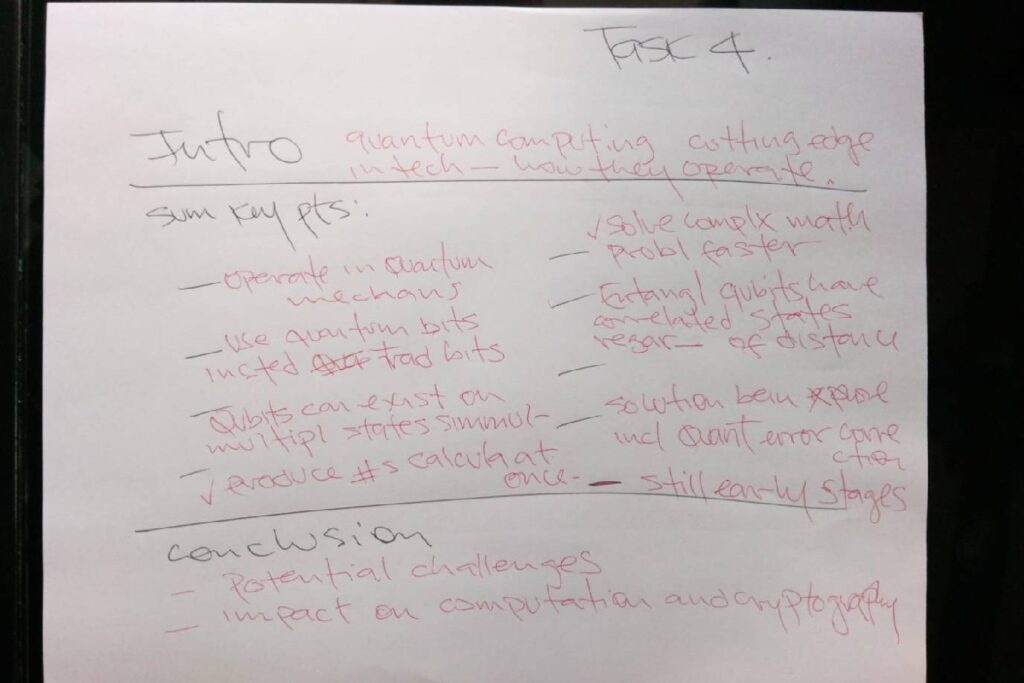
60 Secs to Answer
Remember, these note-taking templates are just a guideline. The key is to develop a system that works best for you, especially under the time constraints of the test. Practice using these templates to become more efficient at capturing essential information quickly and accurately. If you have any other questions or need further assistance, feel free to ask!
Dividing your paper when you are listening and taking notes
Dividing the paper into sections for note-taking, especially during listening tasks like those in the TOEFL, is important for several reasons:
1:
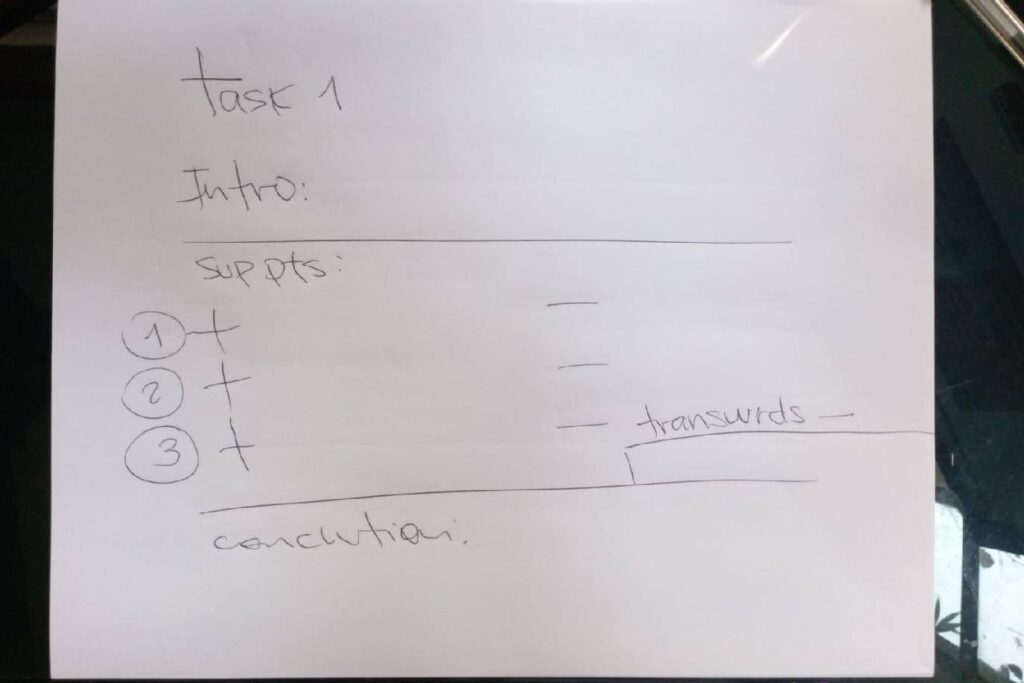
2:
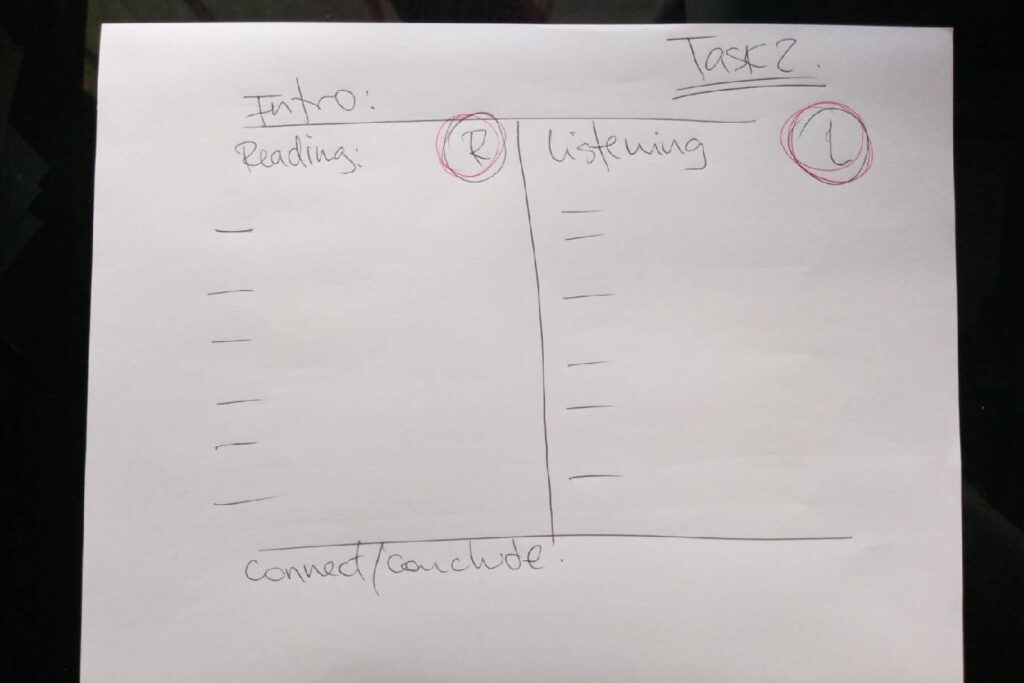
3:

4:
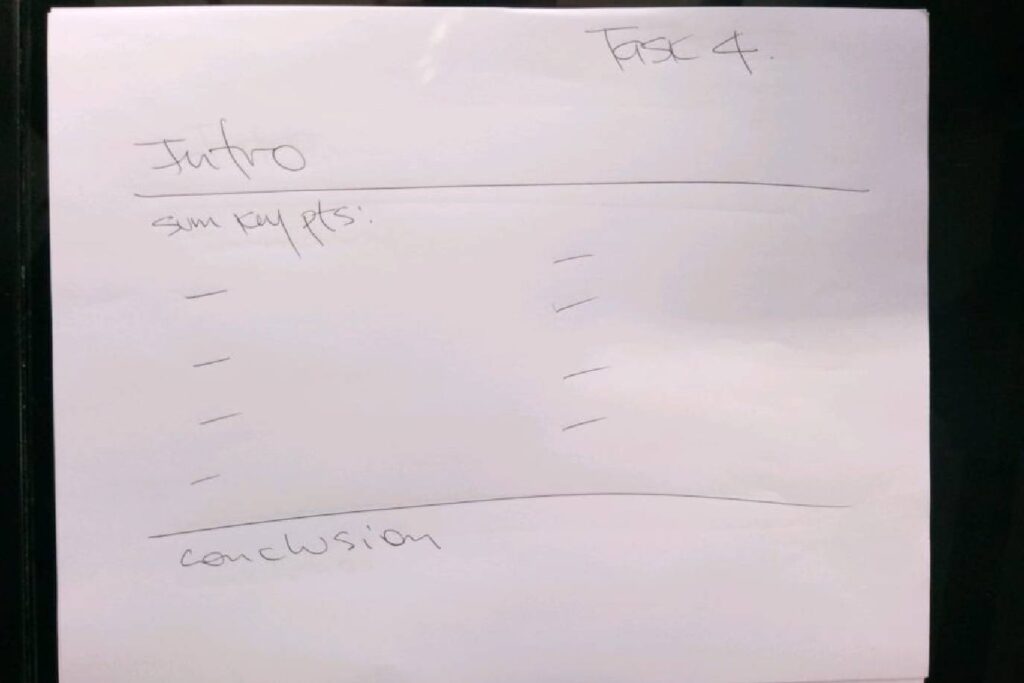
Why is it important to divide your paper?
- Organization: It helps keep your notes organized. By having designated areas for different types of information, you can quickly jot down points without cluttering your notes. This organization is crucial when you need to refer back to specific details quickly.
- Efficiency: Divided sections allow for more efficient note-taking. You can directly write down key points, details, or examples in the relevant section without wasting time deciding where to put them. This is particularly important under time constraints.
- Focus on Key Elements: Having predefined sections (e.g., Main Idea, Examples, Arguments) can help you stay focused on capturing the most important elements of the lecture or conversation. This structure guides you to listen for specific types of information.
- Easier Review and Synthesis: Well-organized notes make it easier to review and synthesize the information later. When it’s time to speak or write about what you’ve heard, having clearly separated notes helps in quickly assembling your thoughts in a coherent manner.
- Reduces Cognitive Load: Listening, especially to complex academic content, while simultaneously preparing to speak or write about it, can be cognitively demanding. Having a structured note-taking system reduces this cognitive load, as it provides a clear framework for what to note down.
- Enhances Comprehension and Retention: Writing down information in an organized way can enhance your understanding and retention of the material. It encourages active listening and engagement with the content.
In summary, dividing your paper for note-taking during listening tasks is a strategic approach to enhance the effectiveness and efficiency of your note-taking process, which can be a significant advantage in exams like the TOEFL.
Examples of how you can divide your paper
you can simply do it by tracing lines across a white sheet of paper whenever taking the test or practicing

